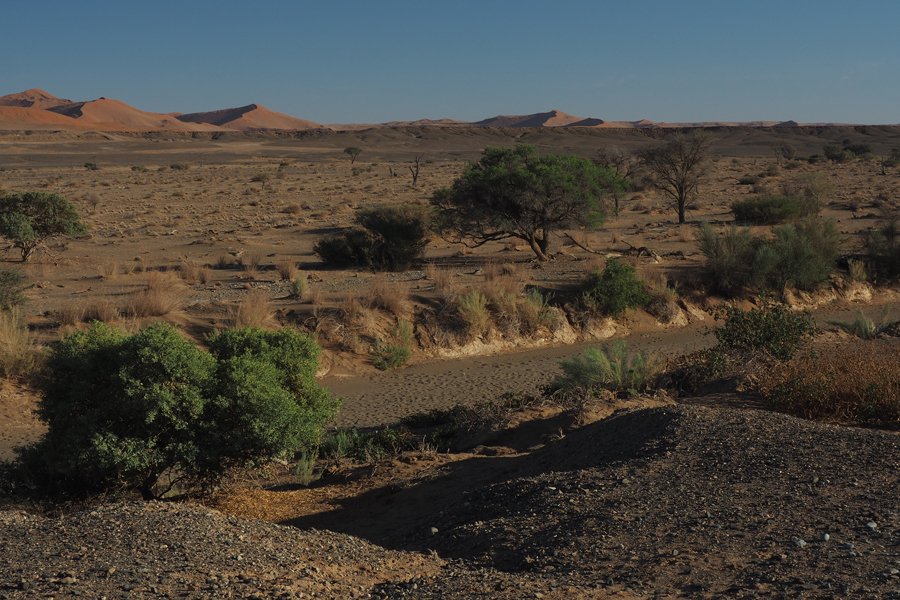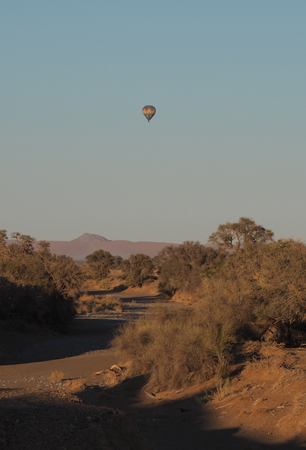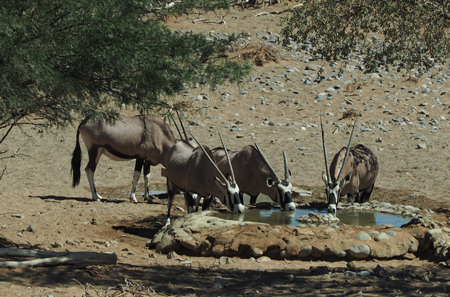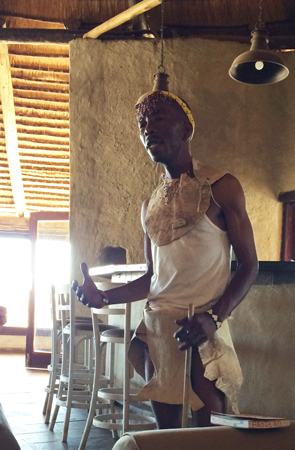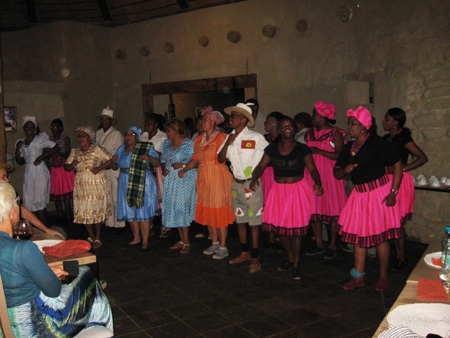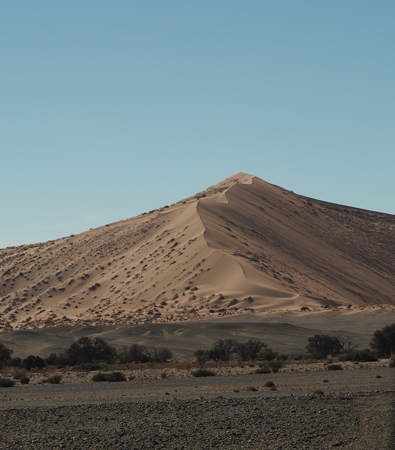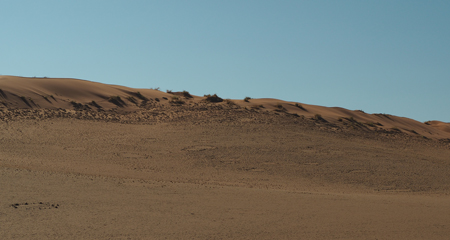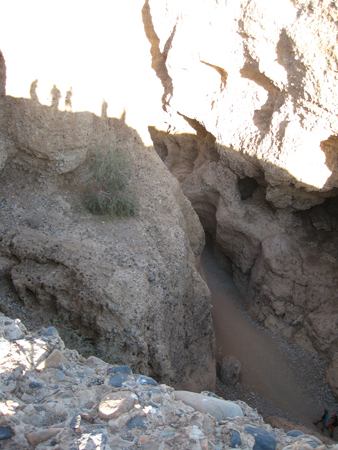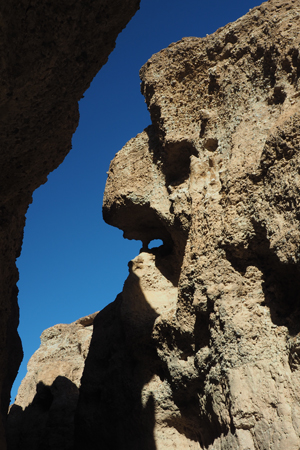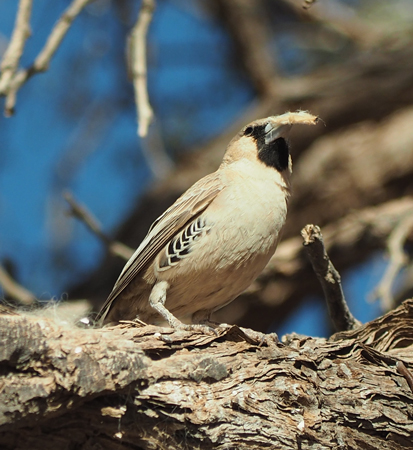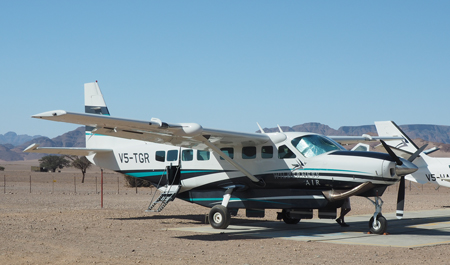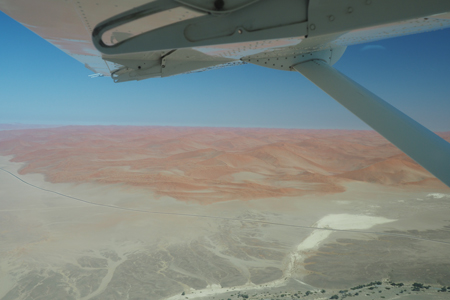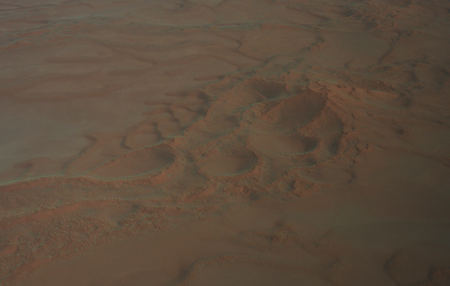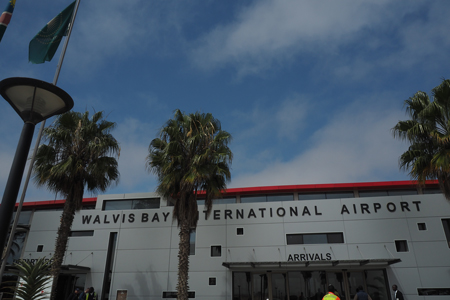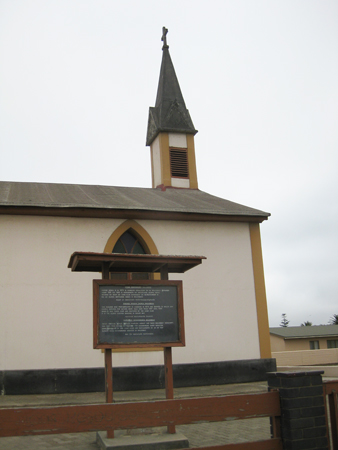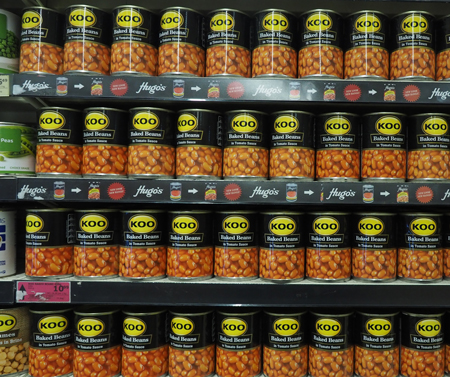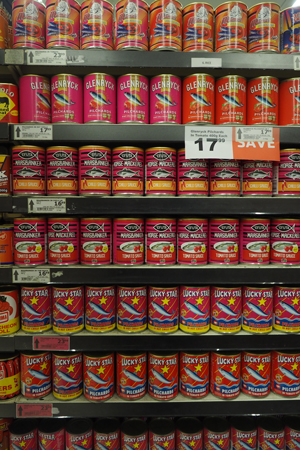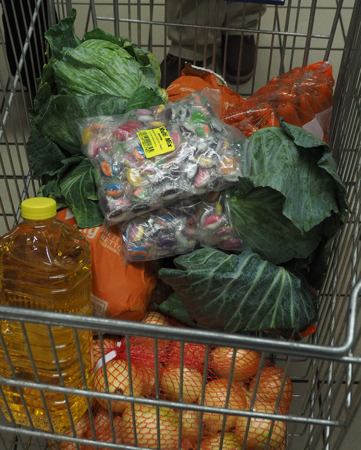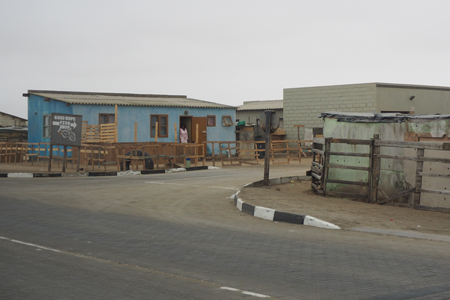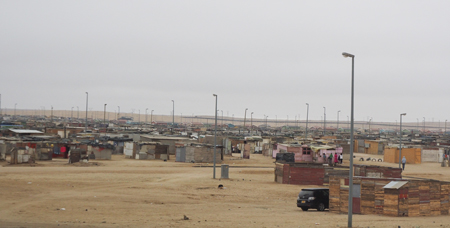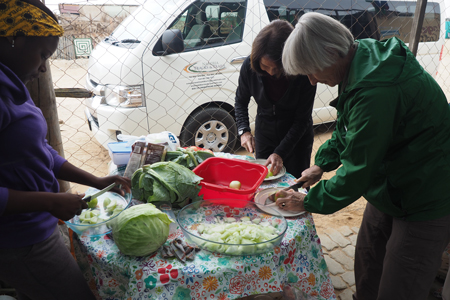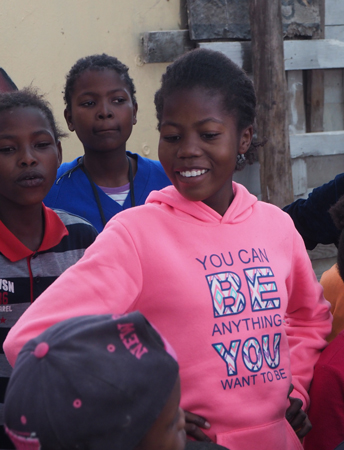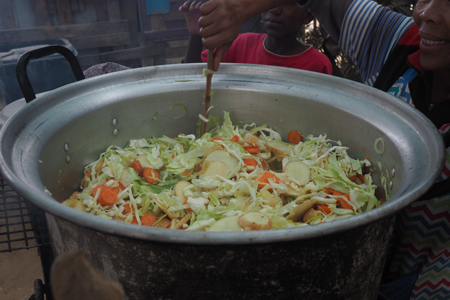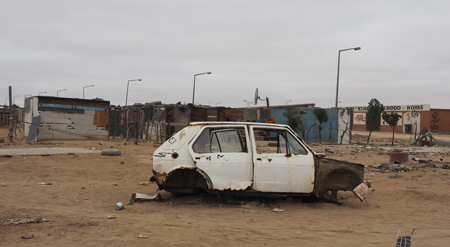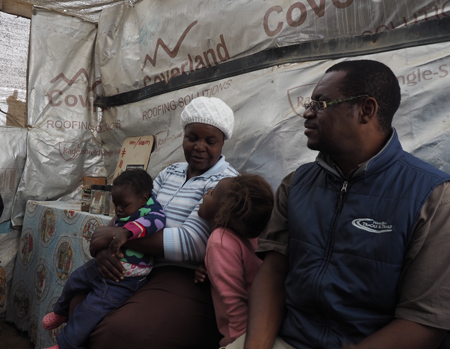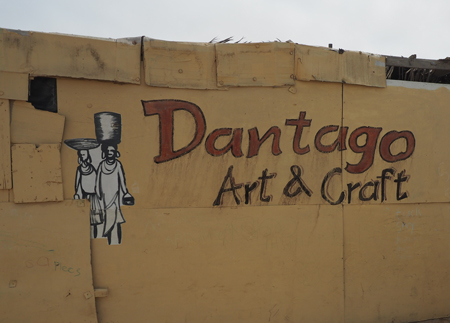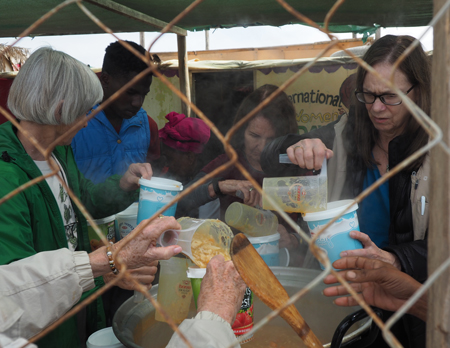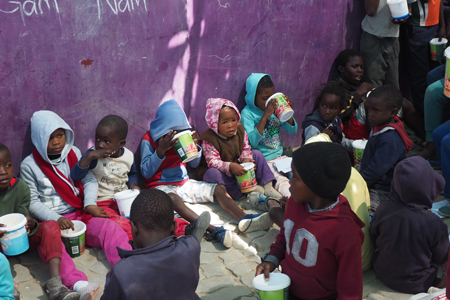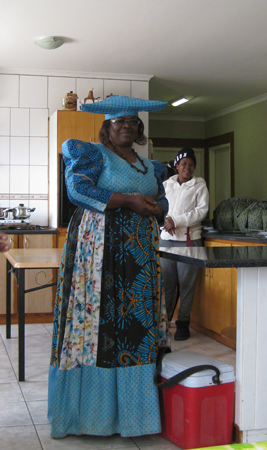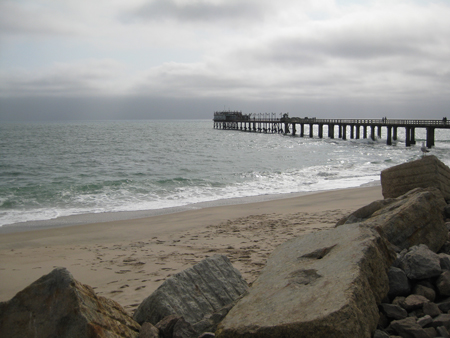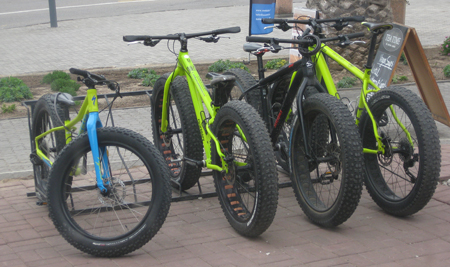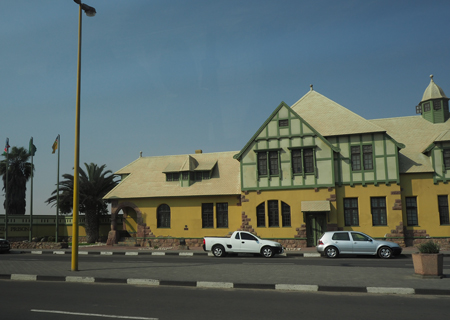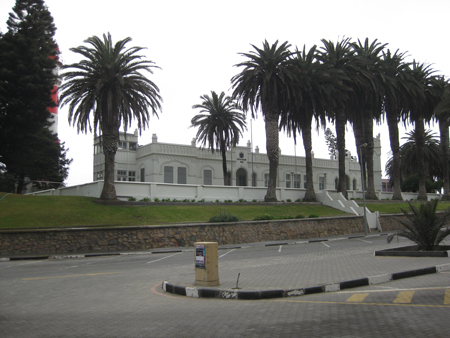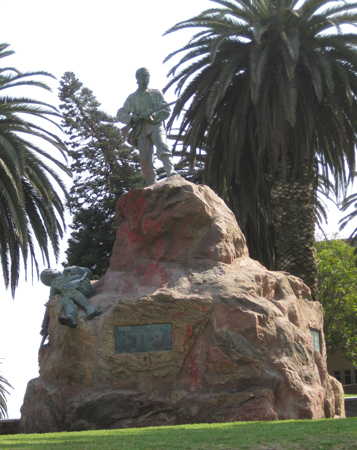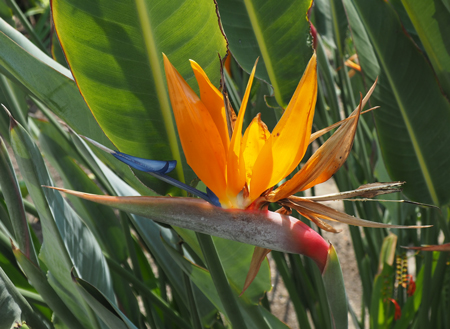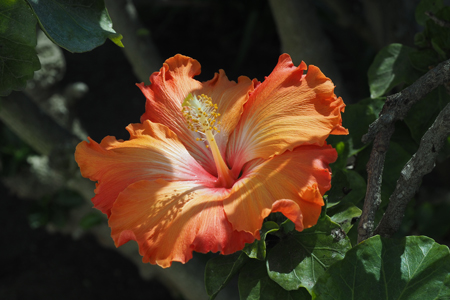Sat., 8/26/2017 - Kulala in the Namib Desert
Our options this morning were: an expensive balloon ride in the desert, a 7 AM nature walk with our drivers, or time to enjoy the scenery and animals around our lodge. We took the third option! We slept as long as we wanted, had a regular breakfast with cooked eggs and bacon, and then sat out on our porch in the shade and watched springbok and oryx closer than we have seen them from the vehicles. It was so quiet and peaceful.
View of the Namib Desert from our tent
Balloons above our camp
Oryx and Springbok - the position of the Oryx's horns shows why it was thought to be a unicorn
Oryx approaching the waterhole
Oryx at the waterhole
Oryx at the waterhole
Oryx
At 2 PM a guide, who happens to be an educated San bushman, spoke to our group. There are several San tribes or groups in existence in Namibia but they are not as protected by the government or exempt from some government rules as they are in Kenya. They are not allowed to hunt wild animals in the national parks and have to exist in small areas on private game reserves. These areas are shrinking. The Bushmen are not allowed to go naked in “public.” Among other things he told us about ostriches. The Bushmen used to skin an ostrich and wear it to hunt. The skin covered their legs and the head was held up with a stick. (One ostrich egg is equivalent to 24 chicken eggs. The silly birds can run 60 MPH.)
San Bushman
Dancing at the Kulala Desert Lodge
Next we drove out to the Sesriem Canyon. We passed the end of the dunes and took photos of the World Heritage sign for the Namib Sand Sea and the “Fog Desert.”
The Sesriem Canyon is a fault created by the movement of two tectonic plates. When it rains hard – in 2010, 2011 and 2012 – water runs down the mountains (hills) into a river across the desert and falls into this canyon. The canyon or fault is 3 km long. It is made of sandstone and clay. We hiked down into the canyon 45 meters deep and looked up at the conglomerate rock walls. Two of us wiggled through to the pool where the river drops into the canyon. It was an interesting geological excursion.
Namib Dune
Namib Dunes
Sesriem Canyon
Sesriem Canyon
Sociable Weaver
Sun., 8/27/2017 – Kulala to Swakopmund
We had plenty of time to get ready for our 10 AM flight from the gravel strip to Walvis Bay on the Skeleton Coast. The pilot delayed us 15 minutes so the fog could clear enough to land. We flew at 6,600 feet and could see the red sand dunes south of the east flowing Kuiseb River, the deep wash of the river filled with trees but no water now, and barren gray rocky outcrops and tan sand.
Walvis Bay is a natural deep harbor and a center for whaling. The port is desirable because import and export from the land locked African neighbors – Botswana, Zambia, Zimbabwe, etc. – benefit by using this port instead of Cape Town. This area of Namibia is important also for fishing and uranium mining. Walvis Bay means Bay of Whales. We should see many seal colonies and maybe a whale.
Castro, our driver, took us to the lagoon in Walvis Bay and we looked at hundreds of flamingoes and a few pelicans. Tall flamingoes eat shrimp and are pink, lesser flamingoes are darker and eat only vegetation.
We went to the catamaran dock and had our best meal of the trip so far at The Anchor. The group had very fresh Kingklip breaded fish and two large prawns – with their heads on. I had a large tender juicy steak and fries. We also had salad and two scoops of ice cream with berries.
The oldest building in Walvis Bay is a German Church built in 1878. It was prefabricated in Germany and shipped here. It is now a Lions Club meeting place.
Kulala Desert Lodge Airstrip
Kulala Desert Lodge Airstrip
Flying to Walvis Bay
Flying to Walvis Bay
Flying to Walvis Bay
Flying to Walvis Bay -runway ahead
Walvis Bay Airport
Rhenish Mission Church
Mon., 8/28/2017 – Swakopmund
Today was the OAT “Day in the Life of...” and was one of the most depressing we have experienced.
First we went to the Pic and Save market around the corner from our hotel and bought 3 cabbages, 7 kg of potatoes, 2 bags of carrots and 2 of onions, a large package of elbow macaroni, and 4 packs of Knorr’s vegetable soup mix. I added 2 large packs of candies.
On the way to the Dantago Community, a Democratic Resettlement Community, founded in 2001 as a temporary resettlement community for people waiting for subsidized housing in the city. It was initially built mostly of reclaimed garbage from the city landfill. The government has a plan where a man can buy a lot, build a one-room dwelling, and add a room later. The government lends them $30,000 to do this. They have seven years to pay it off or lose it. If they spend their money on a second-hand car or alcohol they will not be able to pay off their loan. The government is starting another section with two room houses for $80,000. In the meantime (the waiting list is long) people live in hovels made of cardboard, odd pieces of wood, or parts of old cars. The conditions are pathetic and inhuman and that is where we visited a day-care center and made soup out of our cabbages and things and then served about 50 neighborhood children.
Grocery shopping
Grocery shopping
Grocery shopping
Dantago Community
Dantago Community
Dantago Community
Dantago Community - metered water pump
A woman with volunteers organizes this Dantago Community Rising project without any funds but donations from OAT, the Namibian mines near Swakopmund, etc. She has a Facebook page and has taught the children discipline, singing, writing, and drawing.
While the soup cooked in the biggest pot I think I have ever seen, we went inside one of the cardboard rooms, sat on benches and listened to Castro translate a talk by an herbalist. The woman is considered gifted and she collects roots, leaves, and dung from the desert and creates her teas to comfort ailments of various sorts. She is also a midwife.
Back at the center the kids lined up and the older child leaders helped distribute the hot soup we dished out into plastic containers like ice cream may have come in. The kids sat on the floor and ate with their fingers! Several came back for seconds. It was the only meal some of the kids would have today.
I dared to use the center’s toilet. It was in a palm leaf and cardboard “room” with no ceiling, just a toilet in the sand. Bring your own TP and don’t expect a toilet seat. Our guide thought it was very nice!
Dantago Community - cutting up the veggies for the stew
Dantago Community - cooking the stew
Dantago Community - she should be a success
Dantago Community - the stew
Dantago Community
Dantago Community - meeting with the herbalist
Dantago Community
Dantago Community - time to dish up lunch
Dantago Community
Dantago Community - the modern toilet
We next went to an orphanage of sorts. A Herero woman has a large house and keeps 21 kids whose mothers abandoned them or died of HIV-AIDS. We served ourselves lunch here – lamb, polenta, and salad. The bread she baked was the good part. Then she talked to us about how the Himbo people of Namibia became Herero because the Germans made them wear clothes to be their domestic workers. The “Victorian” dress and “hat” was to make the women look like cows. The headpiece has two points like horns and the dress has puffy shoulders and wide skirt like a hefty cow.
Herero Orphanage founder
We finally got out of the slum area and were taken back to our hotel and sanitation. After using a real toilet and washing our hands to our elbows, Marge and I went out for a stroll around the tourist part of town. It was only about 55° with a cool breeze from the ocean. It is their winter. We got more Namibian rands from a Cirrus ATM, walked to see the red and white lighthouse, and to look at the beach and the Atlantic Ocean. We found a nice coffee shop, Slowdown, and enjoyed mochaccinos sitting inside. They were delicious.
“Dinner on our own” tonight was at The Tug. Lloyd reserved a table for all of us. I had a HUGE chicken burger and fries. Most of the others had fish and chips and starters. It was crowded in the restaurant but the food was very good.
Swakopmund pier
Swakopmund beach (Atlantic Ocean)
Sand bicycle rentals
Sand bicycles
Swakopmund lighthouse
Swakopmund
Swakopmund - State House
Swakopmund - Marine monument
Bird of Paradise
Hibiscus
Dinner at the Tug
| Return to Top | Return to Itinerary | Return to Trips page to view other trips | Return to Dreamcatcher Home Page |
